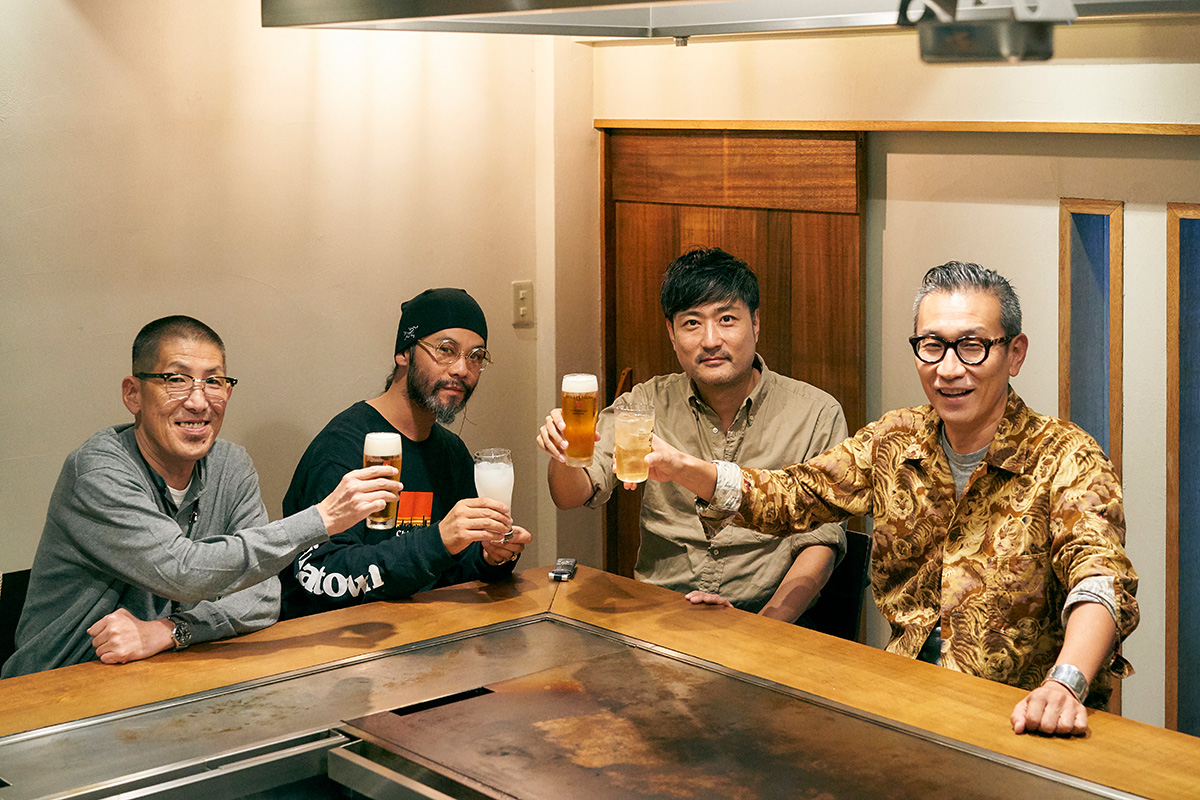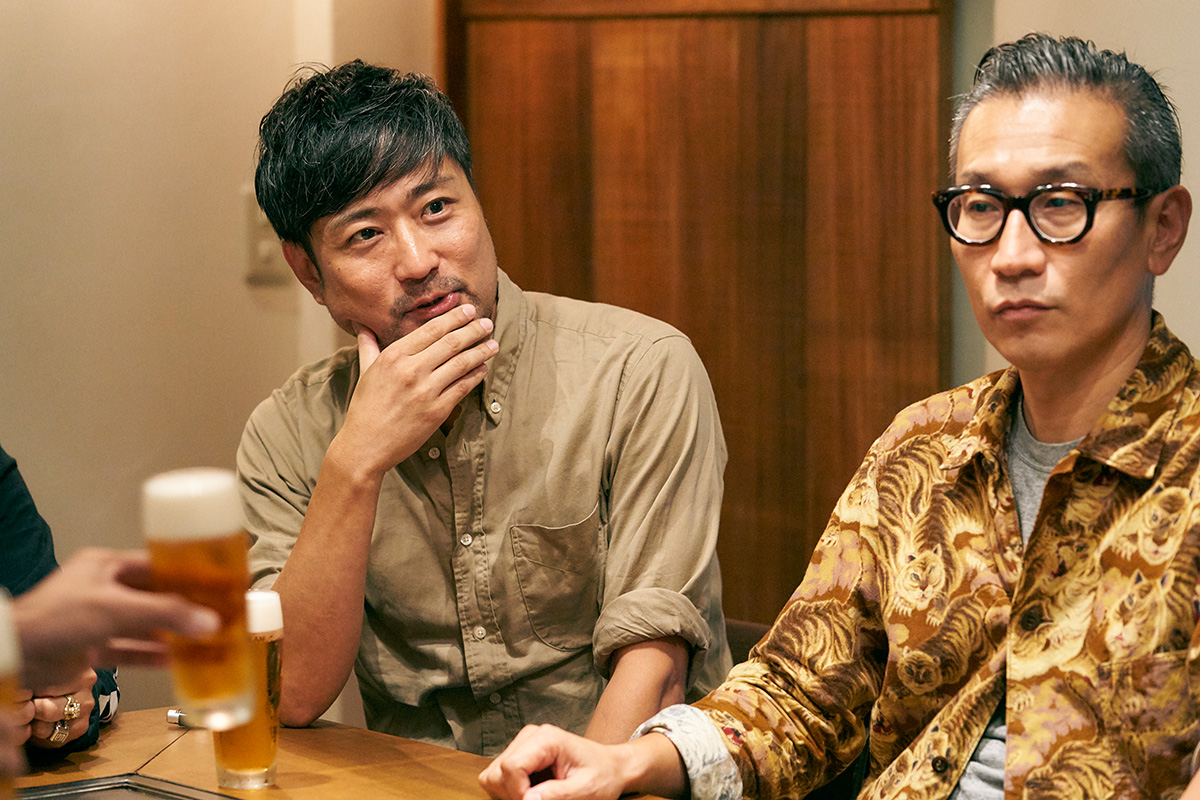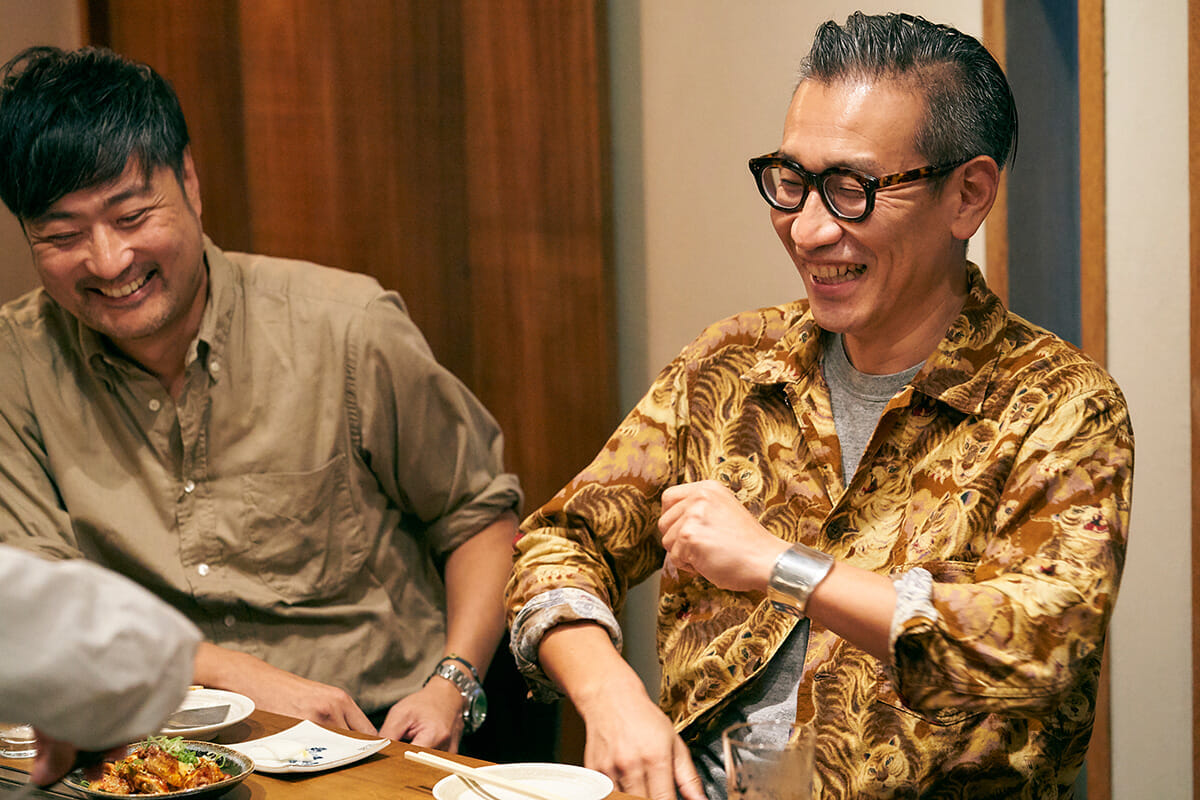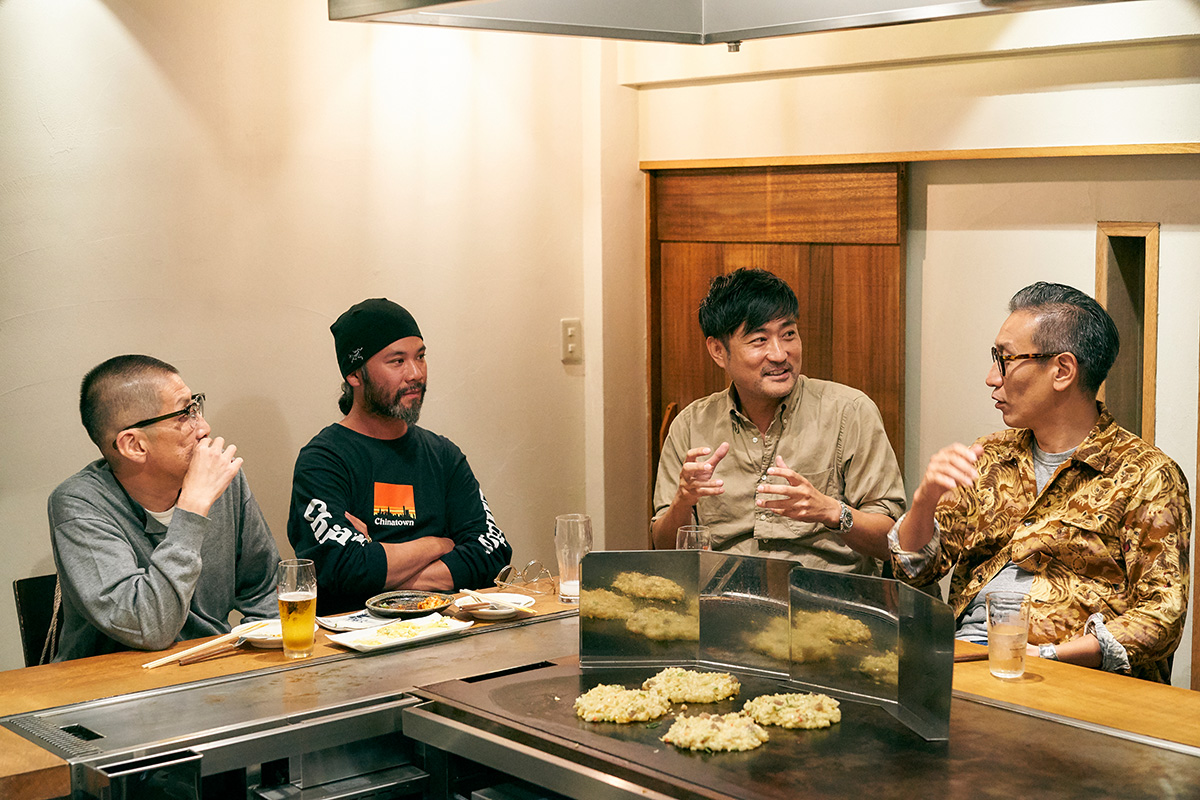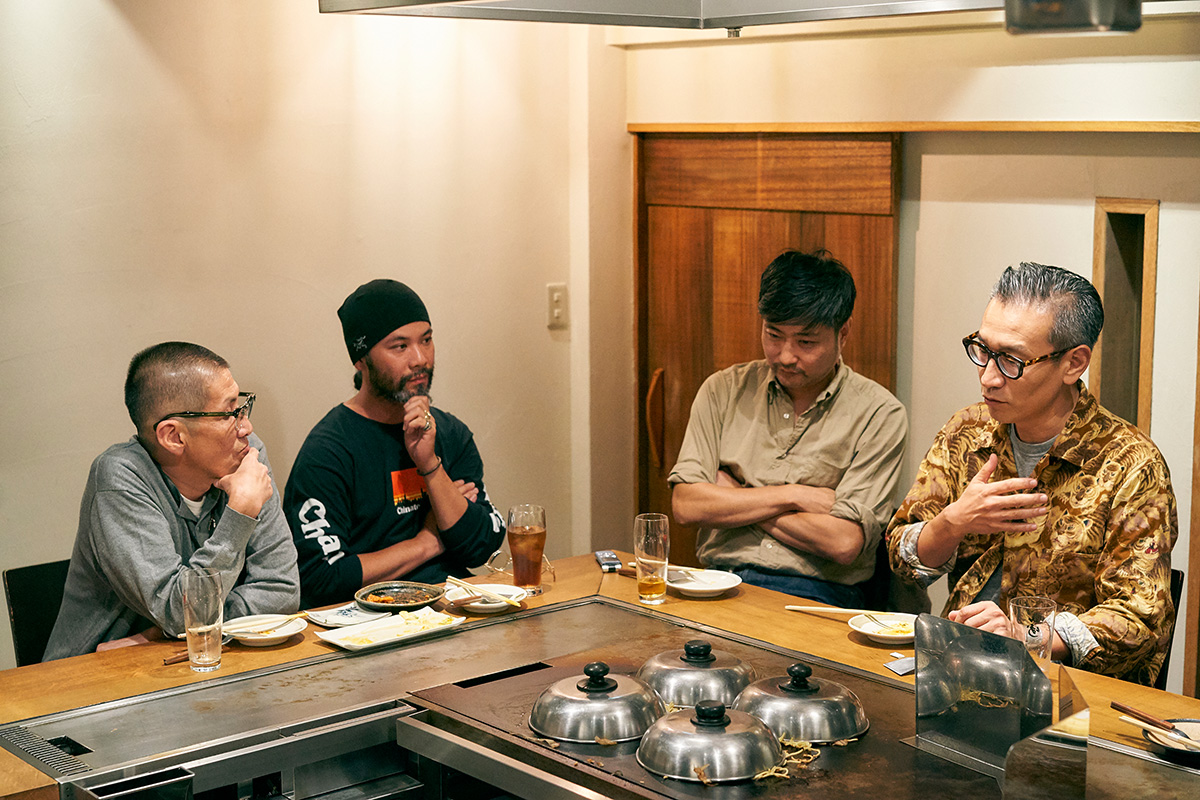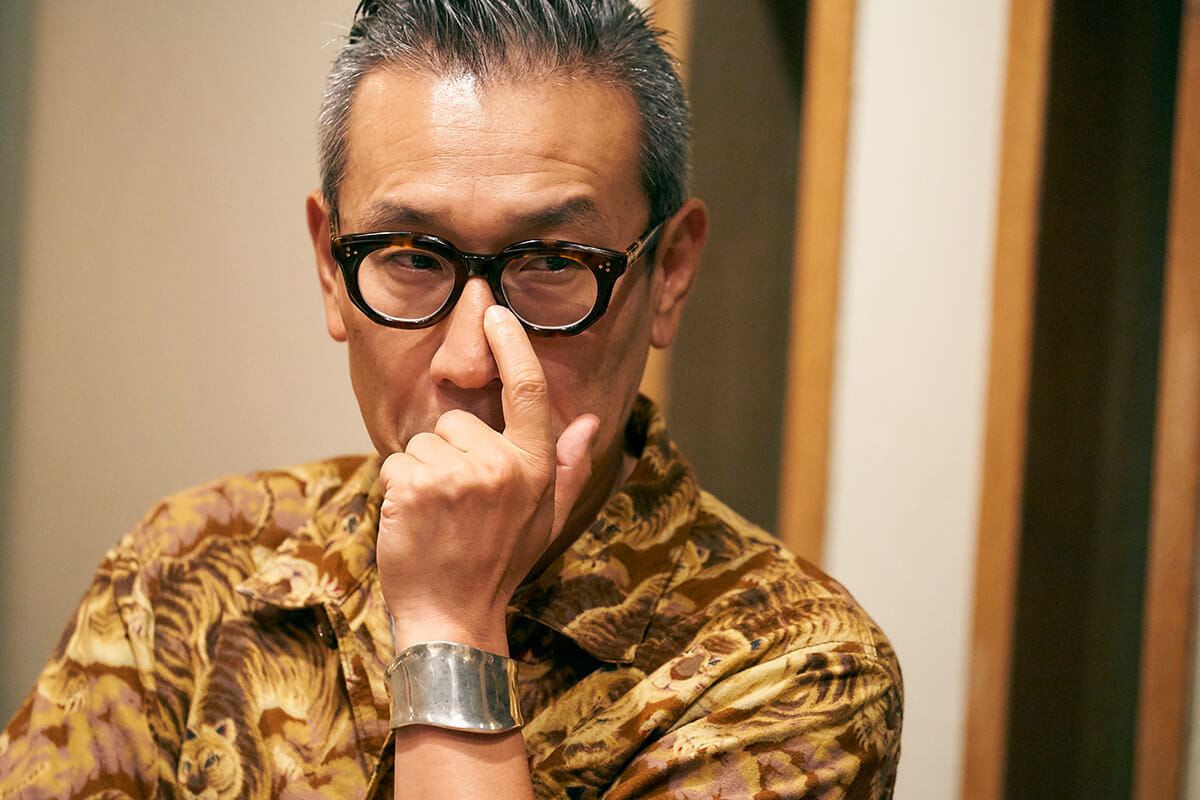
BRU NA BOINNE 20th Anniversary Issue
A 20-year history of Osaka fashion looking back with Bruna Boyne.
BRU NA BOINNE, based in Osaka, has long been a leader in the Kansai fashion scene, mixing work and military heritage from around the world with Japanese traditions and unique techniques at an equivalent value. To commemorate the 20th anniversary of the establishment of BRU NA BOINNE, we have invited some of the leading figures in the Osaka fashion scene for a special talk. The conversation was held with Mr. Tsuji, representative of the brand, Mr. Kimura, president of the pioneering Kansai select store "Loftman," Mr. Tani, director and buyer of the hot new store "IMA:ZINE," which opened in Nakatsu, Osaka the other day, and Mr. Kurokawa, who has a strong relationship with Native Americans and has been coordinating local coordination from a number of select shops. Mr. Ohno of "JEYOKA," a company that coordinates and buys locally for many select stores through its strong ties to Native Americans, was invited for a casual talk session over drinks. Four key persons will look back on 20 years of Osaka fashion with the history of Brunavoin.
- Photo_Kenji Fujimaki
- Text_Takehiro Hakusui
- Edit_Yosuke Ishii
- Special Thanks_OKONOMI YOSHIDA







